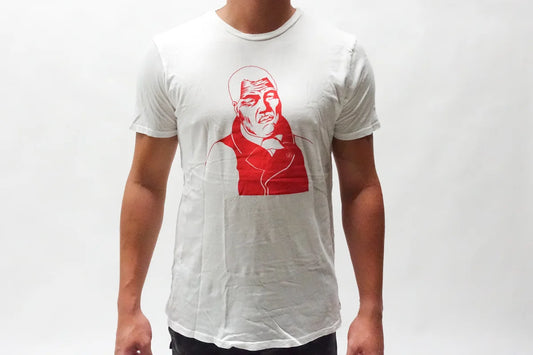Pai‘ea Projects (PP) is a Hawaiian design company. The name “Pai‘ea” (which means “hard-shelled crab”) refers to the nickname given to Kamehameha, and our alma mater, the Kamehameha Schools. “Projects” refers to the collections that ground streetwear in mo'olelo, blending old with new to galvanize Hawaiian communities.
-
FAB5IVE TEE - VINTAGE BLACK
Regular price $52.00 USDRegular priceUnit price per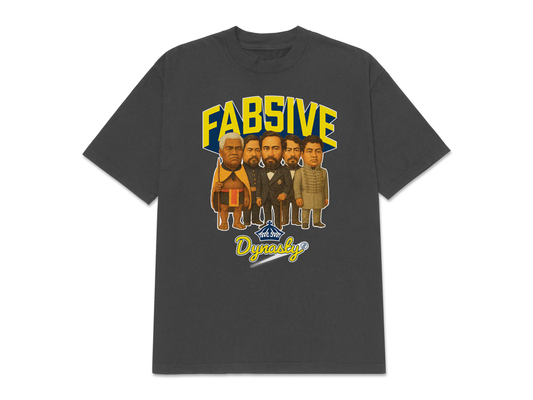
-
KOHALA x "FAB FIVE" BASKETBALL JERSEY
Regular price $120.00 USDRegular priceUnit price per
-
KAMEHAMEHA SNAPBACK "MAIZE & BLUE" DENIM TRUCKER
Regular price $60.00 USDRegular priceUnit price per
-
FITTED + PAIEA PROJECTS KOHALA “Fab Five” Collection
Story by Daniel Ikaika ito
Photos by Andrew Simms
Kohala is the backdrop to some of the greatest origin stories of Hawaiian mo‘olelo. At the end of the Akoni Pule Highway is the majestic Pōlulu Valley, it’s inoa (name) – literally meaning “long spear” – derived from the many battles fought in this wahi pana. In the Hawaiian Creation Story – Kumulipo – Wākea (Sky Father) and Hoʻohōkūkalani lived in Pōlolu Valley and conceived a still-born son, Hāloa, who became the first kalo (taro) plant – the staple food of the kanaka maoli.
Pōlulu Valley provided shelter for Kamehameha the Great as told in the mo‘olelo of “Nae‘ole’s Flight.” Nae‘ole was a chief of Kohala and was known for his athleticism, his name meaning “without shortness of breath,” solidified his reputation as a great runner. When the Hawai‘i Island chiefess, Keku‘ipoiwa, gave birth to a boy there was a prophecy stating a warrior king would unite the Hawai‘i. According to nā kahuna (priests), one of the hōailona (sign) to signal coming of this prophesized leader was an astronomical anomaly the colonizers call, “Haley’s Comet,” which streaked across the sky the night Kamehameha the Great aka Pai‘ea was born in Kohala. Many of the place names of modern Kohala tell the story of Nae‘ole’s flight to save an infant Kamehameha: Hāwī (to breath with a squeal) and Kapa‘au (swimming kapa). Nae‘ole’s flight to save the future mō‘ī marked the start of the Kamehameha dynasty who ruled a united Hawaiian Islands from 1795 to 1872 with Pai‘ea (Kamehameha the Great); Liholiho (Kamehameha II); Kauikeaouli (Kamehameha III); ‘Iolani (Kamehameha IV); and Kapuāiwa (Kamehameha V). -

Like Pai‘ea, Cowboys Guard Layden Kauka is a celebrated son of Kohala. He continues the Kauka legacy of his father and older brothers as top basketball prospect.
-

According to Nohea Lee – who is a hula dancer with Hālau Manaola and mother of @LaydenKauka_ – it’s an honor for the Kohola Cowboys Varsity Boys Basketball Team to participate in in the Lono Run which instills a sense of place and Hawaiian culture in the squad.
“We are honored for this opportunity to begin each basketball season with this event,” says @kaukaboyz.” It allows the boys to connect with their kupuna, Kohala community and each other. One spirit. One team. One family -
Lono Run
Legacy is not what you intend to do, rather it’s what your ancestors say about you and do in your memory. In the spirit of Nae‘ole, who was the athletic chief that saved an
infant Kamehameha from peril, it’s a fitting tradition that ‘Aha Pule ‘Āina Holo ends in Kapa‘au with the Kohala Cowboys Boys Varsity Basketball Team.
The ‘Aha Pule ‘Āina Holo (aka “The Lono Run”) marks the start of Makahiki Season on Hawai‘i Island and concludes at the original Kamehameha Statue in Kapa‘au. Kohala Cowboys Varsity Boys Basketball Team participates in this island-wide marathon to honor their kupuna (ancestors) and pay tribute to Lono: one of the four main Hawaiian akua (gods). When Makaliʻi (the constellation Pleiades) rises at sunset the Hawaiian new year, known as Makahiki begins typically from mid-November and usually ending in late January or February. It is a time set aside for tribute, harvest, sport, and aligns with the rainy season.
Hawai‘i Island is a land mass of 4,028 miles with a population roughly of 201,513 people, and the Lono Run is a multi-day relay event open to the public that circles the Big Island. When this island-wide marathon reaches Hāwī the torch – a baton representing Lono – is passed to the Kohala Cowboys Varsity Boys Basketball Team. The torch is passed to the young hoopers throughout Kohala as the event makes its way to the original Kamehameha Statue in Kapa‘au where there is mele, oli, and hula to end the marathon. A fitting sporting event with cultural protocol to honor Lono, Makahiki Season, and Kamehameha the Great.
-
Change The Game
When Fitted and Paiea Projects discuss history we view i ka wā ma mua through an urban lens: hoops, hip-hop, and Hawaiiana.
From 1795 to 1872 the Kamehameha Dynasty changed the game in Hawai‘I by embracing a world view. Paiʻea came first — the unifier, the OG. He pulled all the islands together by utilizing Western tech and laid down Kānāwai Māmalahoe. Then Liholiho stepped in — bold moves only. He broke the kapu system and opened Hawaiʻi to the world. Kauikeaouli brought structure and vision — first constitution, land reforms, and that timeless line: “Ua mau ke ea o ka ʻāina i ka pono.”ʻIolani? Heart of gold — started Queen’s Hospital to care for the people. And Kapuāiwa? Pure backbone — held it down for the culture, language, and Hawaiian pride — established Kamehameha Day and the Royal Order of Kamehameha.
Fast forward to 1991, University of Michigan freshmen rolled onto the court like a hui of young warriors, bringing swagger and a whole new style of play. They made NCAA history as the first team to start five freshmen in a championship game — and they did it twice (’92 & ’93). They didn’t win the title, but they won the culture. Maize and blue. Baggy shorts. Black socks. Attitude for days. Their merch? Flying off the shelves — even more than Michigan’s own 1989 national champs. They weren’t just hoopers — they were trendsetters that changed the game, ushering in hip hop style, and influencing the narrative of college basketball forever. We see you, NIL. -

The Fitted + Paiea Projects Kohala “Fab 5” Collection pays homage to the Kamehameha Dynasty, drawing inspiration from the maize and moniker of the early-90s Wolverines: KOHALA x "Fab Five" Basketball Jersey; Kamehameha Dynasty "Fab Five" Tee; and Kamehameha 9FIFTY Snapback “Maize & Blue” Denim Trucker. No matter the vehicle, how we drive mo‘olelo to the present is always with the intention: I ka wā ma mua, I ka wā ma hope (The future is in the past).
-
He Inoa No Paoa
Duke Paoa Kahinu Mokoe Hulikohola Kahanamoku
(August 24, 1890 – January 22, 1968)
By Daniel Ikaika ito
Duke Kahanamoku is easily the most famous Kanaka Maoli surfer to ever ride a wave. His skillas kanaka he'e nalu (surfer) didn't first make the full-blooded Hawaiian famous. It was actuallyhis ability to ‘au‘au (swim) that made him a household name as an Olympian. Regardless of how we know “The Duke” – and or what achievements we attribute to this kane (man) – his ‘ohana
(family) knew him as "Paoa."
We pour out some kamapane (champagne) to the legacy of this moho (champion) with the Waikīkī PAOA Pack.
Born August 24, 1890 (8/24) in Honolulu, Paoa was the hiapo (eldest) of nine children. His mother, Julia Pa‘akonia Lonokahikina Paoa, and father, Duke Halapu Kahanamoku, both had close ties to the family of Pai‘ea (King Kamehameha The Great). His father was named by Princess Bernice Pauahi Bishop – the founder of the Kamehameha Schools – in honor of the arrival of England's Duke of Edinburgh in 1869. Hence, the hiapo of ‘Ohana Kahanamoku – who we know as "Duke" or "The Duke" – was lovingly called "Paoa" by his family. -

Photos: Jason Koy
-

The Fitted + Paiea Projects Paoa Jersey (Black) features an ‘Ōlino ‘Ele‘ele print. ‘Ōlino is the word nā kupuna (the ancestors) used to describe the “bright, brilliant, dazzling, gleaming; brightness, glare” that the sun creates when it shines through the water and creates a glare on the bottom of the ocean. ‘Ele‘ele is “black” in Hawaiian as this basketball jersey draws inspiration from the late Black Mamba whose numbers were “8” and “24” and who was also a champion like Paoa.
-
Since ‘Ohana Kahanamoku had pilina (connection) with the chiefly circles of Pai‘ea, they had the familial privilege of being the designated kahu of some of the aliʻi’ lands of Waikīkī. Paoa's father was a policeman. His mother – whose maiden name was “Paoa” – was a servant leader that dedicated her life to participating in charitable organizations, specifically healthcare. During World War I, she was a pivotal leader of ʻAhahui Keʻa ʻUlaʻula (The Red Cross) in Honolulu. She was a member of the Kapiʻolani Maternity Association, the Daughters of Hawaiʻi and ʻAhahui Kaʻahumanu (The Ka‘ahumanu Society), which helped to care for families who had suffered the loss of family members as a result of Western disease. In those days, the Kingdom of Hawaiʻi was still suffering from the dramatic loss of life due to measles, bubonic plague, and leprosy epidemics, amid a global pandemic of influenza that killed about one million people worldwide.
Paoa was blessed to grow up in a large Hawaiian family and have solid parents that exemplified Aloha, but his formative years were turbulent times for the Kingdom of Hawai‘i. King Kalākaua ruled the Kingdom of Hawai‘i when Paoa was born. By the time Paoa was two years old, 13 haole businessmen overthrew the Kingdom of Hawai‘i with the might of the U.S. Marines and imprisoned Queen Lili‘uokalani in ‘Iolani Palace on January 17, 1893. Paoa was three when the Republic of Hawai‘i became the de facto government on July 4, 1894. The United States of America annexed Hawai‘i on July 7, 1898, and established the Territory of Hawai‘i when Paoa was nine years old.
Paoa was raised on the shores of Kālia on O‘ahu, where the Hilton Hawaiian Village sits today. He was naturally gifted in the ocean as a swimmer, bodysurfer, surfer, diver, canoe paddler, fisherman and sailor, embodying the Hawaiian lifestyle of what the modern world calls a "waterman." He attended Waikīkī Grammar School, Kamehameha School for Boys and McKinley High School, eventually dropping out of school.
-
In 1911 – along with his friends William A. "Knute" Cottrell, Kenneth Winter, Edward Laleleihealani "Dudie" Miller and other Kanaka Maoli surfers– Paoa formed Hawai‘i's first surf club, Hui Nalu. Hui Nalu was in response to the formation of the Outrigger Canoe Club, which was a racially segregated organization for haole elite at the time. Many of the early members of the Outrigger Canoe Club were instrumental leaders in the coup d'etat of Queen Lili‘uokalani and the Hawaiian Kingdom. Later in the Outrigger Canoe Club's history they would eventually allow Native Hawaiians and other minorities to join, and herald Paoa as a hero of the club who taught members the waterman lifestyle. In the same year Hui Nalu was established, a 20-year-old Paoa would break the American 50- yard swimming record by more than a second and crush the 100-yard record by more than four seconds. Utilizing his famous “Kahanamoku Kick” to beat world records, Paoa would go on to become a six-time Olympic medalist in swimming and water polo:
- 1912 Olympics in Stockholm, he won a gold medal in the 100-meter freestyle, and a silver medal with the second-place U.S. team in the men's 4×200-meter freestyle relay
- 1920 Olympics in Antwerp, Paoa won gold medals in the 100-meter freestyle and 4x200 meter
- 1924 Olympics in Paris, Duke won a silver medal in the 100-meter freestyle
The numbers on the tag of The Fitted + Paiea Projects Paoa Jersey – 12, 20, 24 – commemorate the years Paoa won medals at the Olympics. -

-

Today, the hydro foiling community calls linking swells downwind from The Elk’s Club to the Royal Hawaiian Hotel, “The Duke Run.” These waveriders retrace Paoa‘s famous mile-long ride from Kalehuawehe, honoring his memory on modern equipment. The Fitted + Paiea Projects Paoa Pelagic Aquatek HFS is designed for all fans of Paoa and the waterman lifestyle.
-
Although the world was introduced to Paoa as an Olympic swimmer, he will forever be the father of modern surfing. While returning from the Olympics in 1912, Paoa brought surfing to the East Coast of the U.S. with he’e nalu exhibitions at New Jersey’s Atlantic City. Two years later he would introduce the Hawaiian style of surfing to Australia, and in 1915 Paoa would bring he’e nalu to Aotearoa (New Zealand). His surfing exhibitions in the Southern Hemisphere attracted crowds by the thousands. In 1917 – in the prime of his swimming career – Paoa famously rode a legendary mile-long, big Waikīkī wave from Kalehuawehe (Castle’s) to Kapuni (Canoe’s).
We celebrate Paoa’s legendary ride at Kalehuawehe with an ‘Ōlelo Noeau on the Fitted + Paiea Projects Paoa Jersey tag:
Ka Nalu Ha‘i O Kalehuawehe
(The rolling surf of Kalehuawehe)
-
Adding to Paoa‘s celebrity status as a waterman, was his brief stint in Hollywood. He appeared in 14 films between 1925-55, and most notably played the character, Ua Nuku, in the 1948 feature, “Wake of the Red Witch,” which starred John Wayne and Gail Russell. Another notable film Paoa appeared in was the 1955, comedy-drama, “Mister Roberts,” where he played a “native chief” alongside Henry Fonda and James Cagney. Not surprisingly, many haole actors and athletes became friends with Paoa, often hitting up the Kanaka Maoli whenever they visited Waikīkī.
Perhaps, what is lesser known – and more noteworthy – were the ocean rescues Paoa made while living in California. One documented rescue occurred on June 14, 1925, when he rescued eight men from a fishing vessel that capsized in heavy surf while it was attempting to enter the city's harbor. Paoa’s heroic use of papa he‘e nalu (surfboard) led U.S. lifeguards to adopt the surfboard as standard equipment for water rescues.
Following his stint in Hollywood, Paoa held many different jobs when he returned home: stevedore, surveyor, gas-station owner, and City Hall janitor. In 1932, Paoa was elected as Sheriff of Honolulu and served for 13 consecutive terms till 1961. He was – and always will be –regarded as Hawai‘i’s ultimate Ambassador of Aloha, hosting visiting celebrities and dignitaries throughout his lifetime.
On August 2, 1940, Paoa, 50, married dance instructor Nadine Alexander, 35, who moved to Hawai‘i from Ohio, when she was hired to teach at the Royal Hawaiian Hotel. Paoa and Nadine would not have any children.
In 1961, Honolulu disc jockey Kimo Wilder McVay became Paoa’s manager, and licensed his name and likeness across several commercial endeavors: restaurant, Invitational Surfing Championship and signature merchandise (floral-print shoes, aloha shirts, surfboards, paipo boards, skateboards, ukulele and table glasses).
On January 22, 1968, Paoa died of a heart attack at the age of 77. He was the first inductee into the International Surfing Magazine Hall of Fame in 1966, as well as the Huntington Beach Surfing Walk of Fame in 1994. He was inducted into the International Swimming Hall of Fame in 1965 and the United States Olympic Hall of Fame in 1984. Paoa is the only surfer to appear in portraiture on the covers of both Surfer and Surfing magazines and Surfer named him the "Surfer of the Century" in 1999. A 17-and-a-half- foot bronze statue of Paoa stands at Kūhio Beach in Waikīkī and was dedicated in 1990. Another bronze statue of Paoa surfing was unveiled at Sydney's Freshwater Beach in 1994 as the centerpiece of a commemorative park. The U.S. Postal Service issued a stamp honoring Paoa in 2002. In 2013, The Inertia website named him the most influential surfer of all time. In 2021, Sidewinder Films released “Waterman,” a documentary detailing the extraordinary life of Paoa.
Today, California-based company, Malama Pono LLC, owns the trademark to Duke Kahanamoku’s name and likeness after a lengthy, litigious battle that spanned from the early- ‘70s to the late-2000s. This haole ownership of Duke Kahanamoku’s name and likeness by a haole entity remains a point of contention for ‘Ohana Kahanamoku and many Kānaka to this day. -

Artwork: Ian Kualii
-
Pu'ukoholā 2.0
In the days of our ali'i, Kōnane was used to test battle strategies. This Hawaiian two-player game was played on a rectangular board with black and white pieces similar to chess. Kōnane was an intellectual training for a warrior, which measured their ability to strategize an attack, foresee their opponentsʻ next move, and plan their defenses. Pai‘ea learned from some of the best at Kōnane: Kekuhaupi'o (his guardian) was revered as a Kōnane master and Kahekili (some believed to be his father) notably used Kōnane to illustrate his battle plan to his chiefs.
"Because your next move gotta be your best move." – Kauwila. "Konane." Lehua. Daniel Kauwila Mahi, 2020.
One of Pai‘ea's most important moves to uniting the Hawaiian Islands was activating Kūka'ilimoku (snatcher of lands) by constructing Pu'ukoholā. This heiau was 250 feet long, 100 feet wide, with surrounding walls 12 feet thick, rising up 8 feet in height on the upper side, and 20 feet on the lower side. This maneuver elevated Pai‘ea in the chiefly ranks, granting him the mana to defeat his rivals in battle and conquering the islands.
“If you’re plottin’ your next move, I suggest you move into the pō so remote that you lose control to be in tune with the moon, plot your ʻaha now, the time is comin’ soon." – Kauwila. "Konane." Lehua. Daniel Kauwila Mahi, 2020.
-
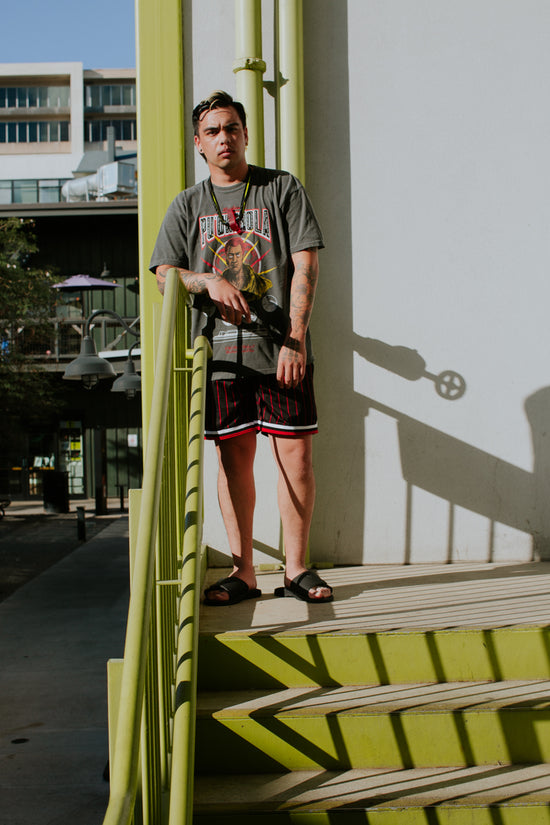
-
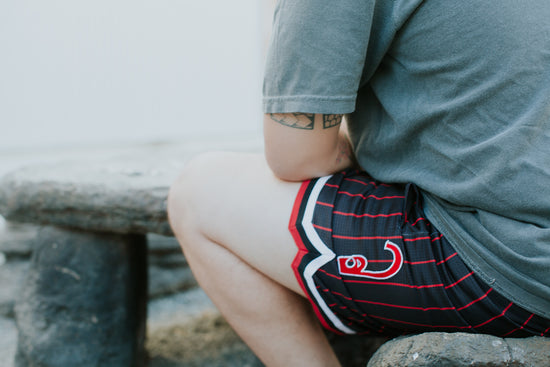
The “Snatch” embroidery on the left leg of the basketball shorts is Kūka‘ilimoku (Snatcher of Lands) and the right leg features the Fitted Kam and PP silhouette.
-
The vertical red stripes of the Pu‘ukoholā 2.0 collection represent the ‘aha‘ula – the red cord that was used by Pai‘ea and his council to decide who would go to Ka‘ū to fetch Keōuakū‘ahu‘ula. In order to fulfill the prophecy of Kapoukahi, Pu‘ukoholā needed to be consecrated with an offering of ali‘i blood. Keōuakū‘ahu‘ula was an appropriate royal status for this offering and also a rival of Paiea.
Upon the completion of Pu‘ukoholā, there was a conference of Pai‘eaʻs high chiefs and priests where it was decided that Kame‘eaimoku and Kamanawa would fetch Keōuakū‘ahu‘ula. Pai‘ea did not like that idea, and instead wanted to personally go to Ka‘ū to prevent massive death on both sides. To settle the discourse between Pai‘ea and his council there was a question posed to the ‘aha‘ula. The kapu surrounding the ‘aha‘ula was heavy so when the red cord revealed the answer then no ali‘i could dispute the answer. They asked the god of war, Kūkai‘ilimoku: “Shall Pai‘ea go to Ka‘ū to fetch his cousin, Keōuakū‘ahu‘ula?”
The ali‘i desiring the answer to the question would stand under the ‘aha‘ula and if the red cord fell or broke while the chief stood underneath the answer would be “yes.” If the ‘aha‘ula remained intact then the god did not consent. Pai‘ea stood under the ‘aha‘ula for a day and the red cord remained taut. The next day the ‘aha‘ula was pulled taut again and the twins of Kekaulike, Kame‘eiamoku and Kamanawa, stood beneath the red cord, but it remained intact. The day after the ‘aha‘ula was pulled taut again, and then the chief, Keaweaheulu, stood under the ‘aha‘ula and it broke. Therefore, Keaweaheulu, an uncle of Keōuakū‘ahu‘ula, was sent to Ka‘ū and brought back Keōuakū‘ahu‘ula to Pu‘ukoholā to be sacrificed.
-
In 1791, construction of Pu‘ukholā heiau in Kawaihae on Hawai‘i Island was completed. We chose #91 for the Pu‘ukoholā 2.0 collection basketball jersey to commemorate this momentous achievement in Hawaiian history. Thousands of people were said to have formed a human chain, carrying stones from Pololū Valley to Kawaihae. No one was exempt from the labor, from high chiefs down to the commoners. Pai‘ea directed all of his ali‘i to work on the construction of Pu‘ukoholā. The only sacred chief who was instructed not to lift a rock for the heiau was Pai‘eaʻs younger brother, Keli‘imaika‘i, who had the Kuleana of preserving the kapu of Kūkai‘ilimoku and Pu‘ukoholā.
-
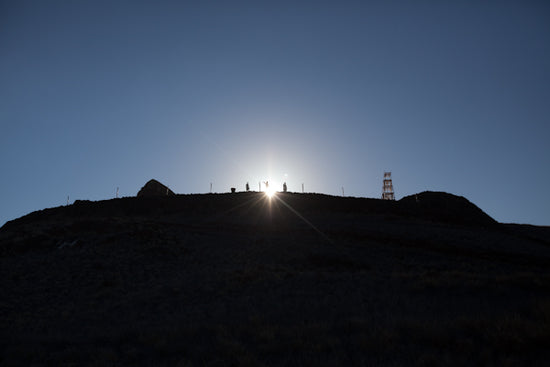
Previous Projects
-
The Great Tee - Manoa Edition
Regular price $34.99 USDRegular priceUnit price per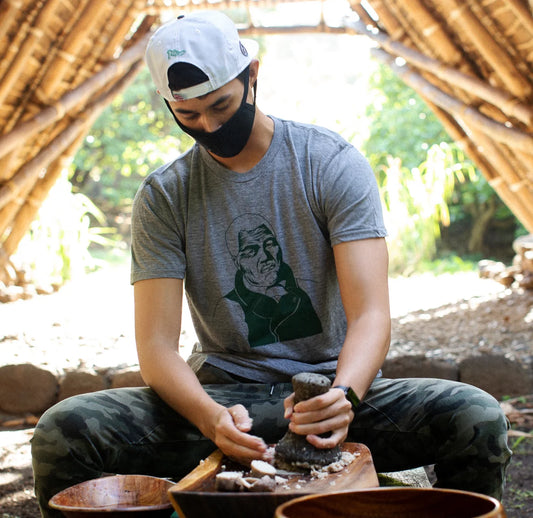
-
The Great Tee - White/Red
Regular price $23.99 USDRegular priceUnit price per